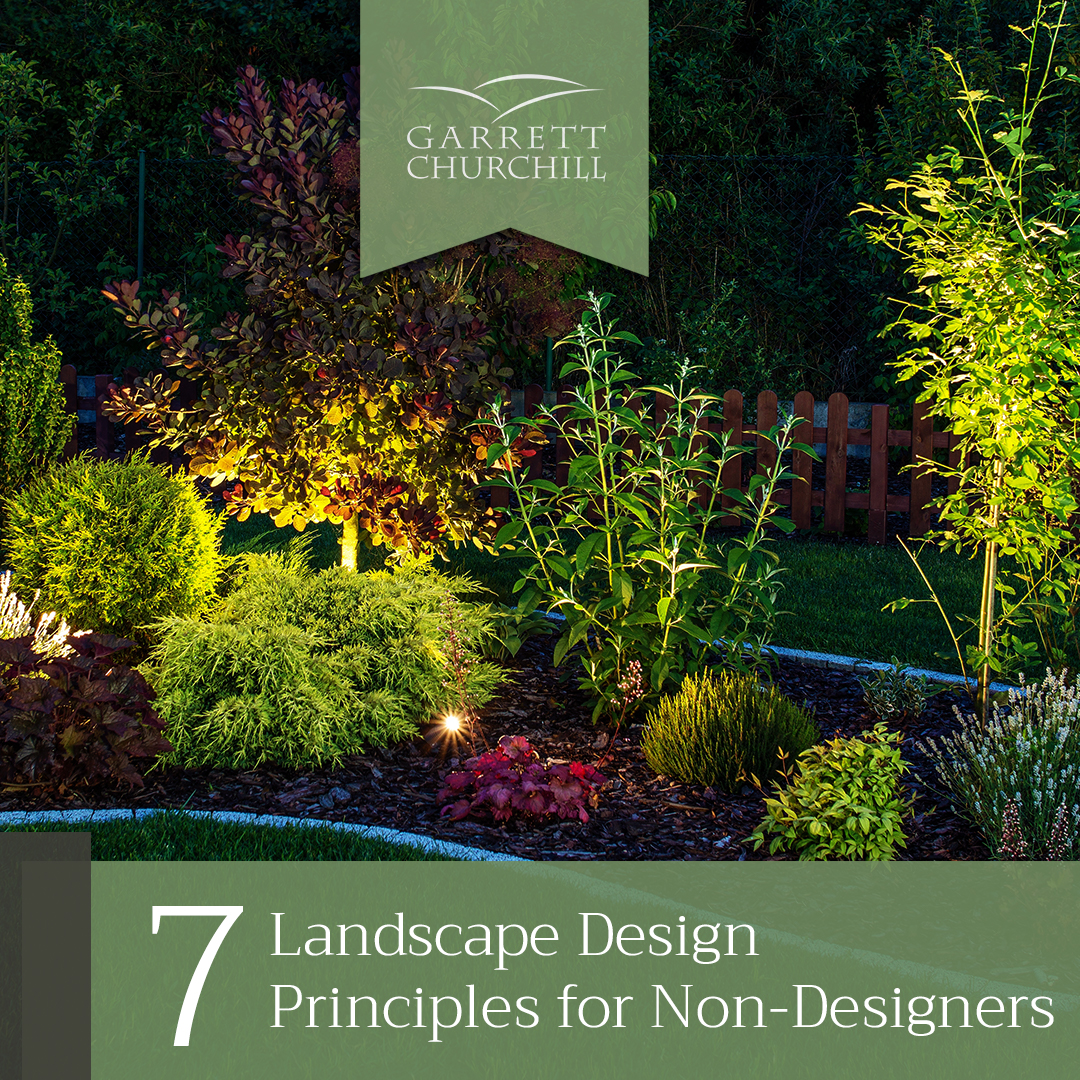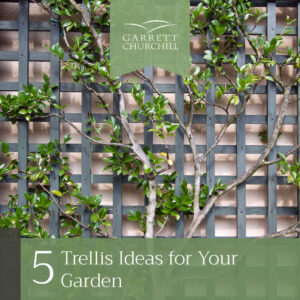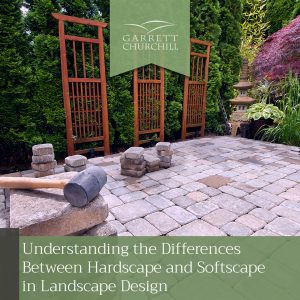7 Useful Landscape Design Principles for Non-Designers
Whether you’re sprucing up a newly-purchased home or giving your long-time home a much-needed makeover, landscape design can be an intimidating, overwhelming concept. Perhaps you’re gathering inspiration from a neighbor’s yard for a traditional look; maybe you’re planning to implement original ideas for a personalized touch. Either way, you don’t necessarily have to be an expert artist or professional designer to create an aesthetically appealing landscape.
A basic understanding of landscape design concepts can go a long way when it comes to cohesive curb appeal. In no particular order, here are 7 design principles to keep in mind when creating your landscape vision:
Balance
When it comes to design, there are two main types of balance to choose from.
Symmetrical balance is often seen in more formal landscape designs. Each side of the yard is identical, often with crisp, clean, geometric patterns and shapes. Maintaining symmetrical landscape balance often requires consistent upkeep, such as hedge pruning and garden maintenance to ensure symmetry.
Asymmetrical balance, on the other hand, tends to be a more informal design style with a natural flow. This balance still requires careful planning, though—while both sides of the landscape don’t need to match visually, they should still contain differing elements that match in “weight.”
Contrast
Balance and contrast go hand-in-hand. A close look at any well-designed landscape will reveal a balanced mixture of opposite-yet-complementary hardscape and softscape design elements: a stone walkway with a lush garden border, for example.
To achieve successful contrast, use a combination of accent pieces and background pieces, or contrasting but complementary colors. Choose focal points to highlight certain elements of your landscape (water features, sculptures, or interesting plants, for example), but be selective. Overusing focal points keeps them from standing out from the rest of the landscape design, thus defeating their purpose.
Texture
To obtain texture in your landscape, use a variety of shapes, sizes, and element types. Texture can be found in plants, rocks, water features, or lighting features, to name a few examples.
As with focal points, too much texture can be chaotic. There are plenty of ways to keep your landscape looking clean, simple, and balanced while also having a diverse combination of design elements.
Color
To achieve a cohesive color scheme, consider the items you want in your landscape and their colors. Trees and flowers, pots and planters, paint colors, rocks, mulch, and more all contribute to your overall landscape color.
If you find a cute bench or yard statue that you love on its own, it’s best to first consider how it would fit in with the colors that already appear in your landscape before you place it into your yard. Plus, maybe you’ll have an excuse to get creative with a DIY paint project!
Scale
The concept of scale goes in line with balance and contrast; it refers to proper proportions, or how one object is sized in relation to others.
If a tree or boulder is significantly larger than everything else in your yard, it will pull focus away from the rest of your landscape. Even if it wasn’t the original intention, incorrect scaling may inadvertently turn background objects into focal points.
Alternatively, if focal point objects are too small, they may end up blending in with the rest of the landscape rather than standing out as an accent piece.
Rhythm
Rhythm, also called repetition or sequence, is achieved by creating consistent patterns within your landscape.
A predictable sequence can be helpful when planning a transition in elements of different size, shape, color, and texture. For example, gradual transitions from tall trees to shorter plants can be more appealing than abrupt, jagged-looking height differences.
Equal amounts of space between elements such as plants, lighting fixtures, stepping stones, and benches can also create a rhythmic line in a landscape. Plus, well-placed lines—even one as seemingly simple as a walkway—can give a landscape an added sense of depth and movement.
Unity
Unity essentially refers to bringing all design principles and elements together. Unless individual details are taken into careful consideration throughout the landscape, it will be difficult to achieve a unified final result.
If you focus too much on balance but not enough on color or rhythm, you could end up with a yard that has perfectly identical sides, but clashing colors and uneven spacing. If you have a beautiful focal point with no complementary elements, that focal point may seem random and out of place.
Bring your landscape vision to life with dependable expertise from our creative landscaping team. Contact us today to schedule an on-site consultation.





